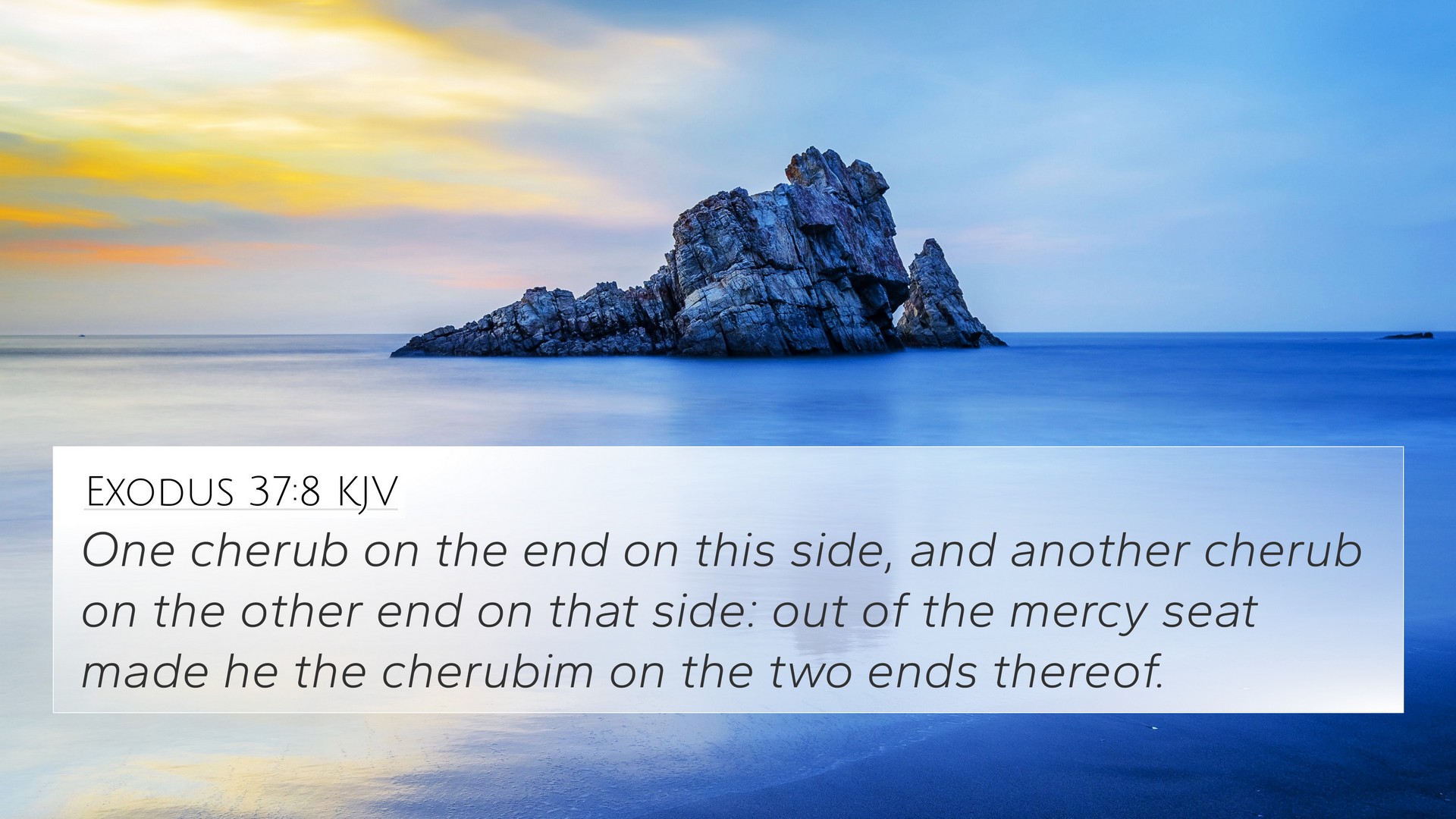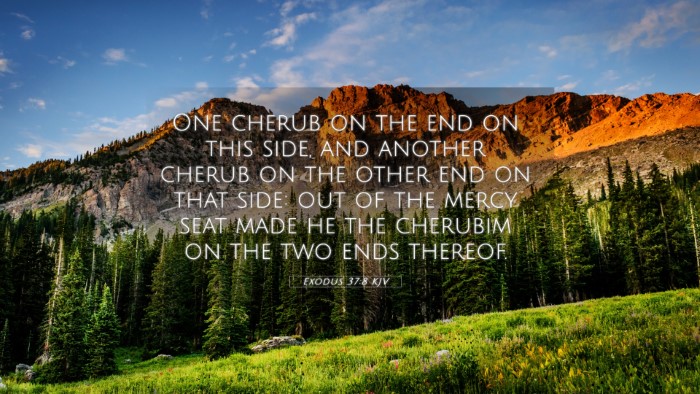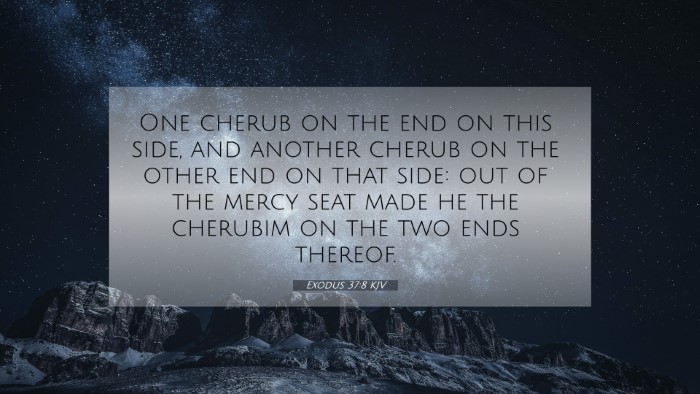Understanding Exodus 37:8
Exodus 37:8 states: "One cherub on the end; and the other cherub on the other end: even of the mercy seat, were the cherubim on the two ends thereof."
This verse is part of the description of the construction of the Ark of the Covenant, a significant object in Israelite worship and theology. The verse emphasizes the placement of the cherubim, which are angelic beings that serve a protective and ministerial role before God.
Summary of Interpretations from Public Domain Commentaries
Insights from Matthew Henry
Matthew Henry's Commentary emphasizes the glory and majesty of God, as represented by the mercy seat. The cherubim are seen as guardians of divine holiness, highlighting the importance of reverence in approaching God's presence. Henry notes that the cherubim's wings spread over the mercy seat symbolize God's protection and the shelter He provides for His people.
- Symbolism of Cherubim: Represents divine presence and protection.
- Mercy Seat: A place of atonement; signifies God's mercy in the midst of judgment.
Insights from Albert Barnes
According to Albert Barnes, the two cherubim facing each other represent the dual aspects of grace and law in God's character. Barnes highlights the meticulous detail in the design, reflecting God's desire for order and beauty in worship. The cherubim's posture indicates both response and reverence, reinforcing the concept that worship is both an act of awe and an acknowledgment of God's nature.
- Worship: Requires an understanding of God's holiness.
- Theological Implication: The presence of cherubim shows God’s desire for relationship with humanity.
Insights from Adam Clarke
Adam Clarke's Commentary draws attention to the mysterious nature of the cherubim and their symbolism. Clarke posits that these heavenly beings not only serve in worship but also act as observers of human actions. He connects the cherubim with the throne of God, reinforcing the concept of divine sovereignty and majesty.
- Guardian Role: Cherubim observe and protect God's dwelling.
- Heavenly Court: Reflects God's majesty and authority in spiritual realms.
Cross References and Biblical Connections
Exodus 37:8 can be related to several other scripture verses that highlight its themes and teachings. Here are some significant Bible cross-references:
- Exodus 25:18-20: Detailed description of the cherubim's construction and significance.
- Isaiah 6:2: Description of seraphim, indicating the heavenly aspect of angelic beings.
- Hebrews 9:5: Mentions the mercy seat and cherubim in the context of the New Covenant.
- Psalms 99:1: God sits enthroned among the cherubim, emphasizing His kingship.
- Ezekiel 10:1-3: Vision of cherubim, further detailing their characteristics and function.
- Revelation 4:6-8: A depiction of living creatures around God's throne, reminiscent of cherubim.
- Genesis 3:24: The guarding cherubim placed at Eden's entrance after the Fall.
Thematic Connections and Analysis
The study of Exodus 37:8 within the broader biblical narrative reveals important connections:
- Divine Presence: Throughout the Bible, cherubim appear as symbols of God’s glory and presence.
- Worship and Atonement: The mercy seat serves as a pivotal location for encounters between God and humanity.
- Judgment and Grace: The interplay of cherubim signifies the balance of God's justice and mercy.
- Heavenly Worship: The posture of cherubim points to the heavenly order of worship and reverence.
Understanding Cross-Referencing in Biblical Study
Utilizing tools for Bible cross-referencing allows for deeper insights into themes and connections between verses. Here are some methods and resources:
- Bible Concordance: A tool to find where specific words appear across scriptures.
- Systematic Bible Study: Analysis that links verses thematically, such as grace, judgment, and mercy.
- Cross-Reference Bible Study Methods: Techniques to juxtapose similar passages for comparative understanding.
Application of Cross-Referencing for Sermons and Study
For those engaged in sermon preparation or personal study, understanding Bible verses that relate to each other enhances the theological depth of their communications. Consider the following:
- Identifying Connections: Seek links between Old and New Testament themes for cohesive teaching.
- Comparative Analysis: Examine how the mercy seat foreshadows Christ's atoning sacrifice in the New Testament.
- Thematic Studies: Focus on specific themes such as divine grace, exploring how multiple verses illuminate this subject.


